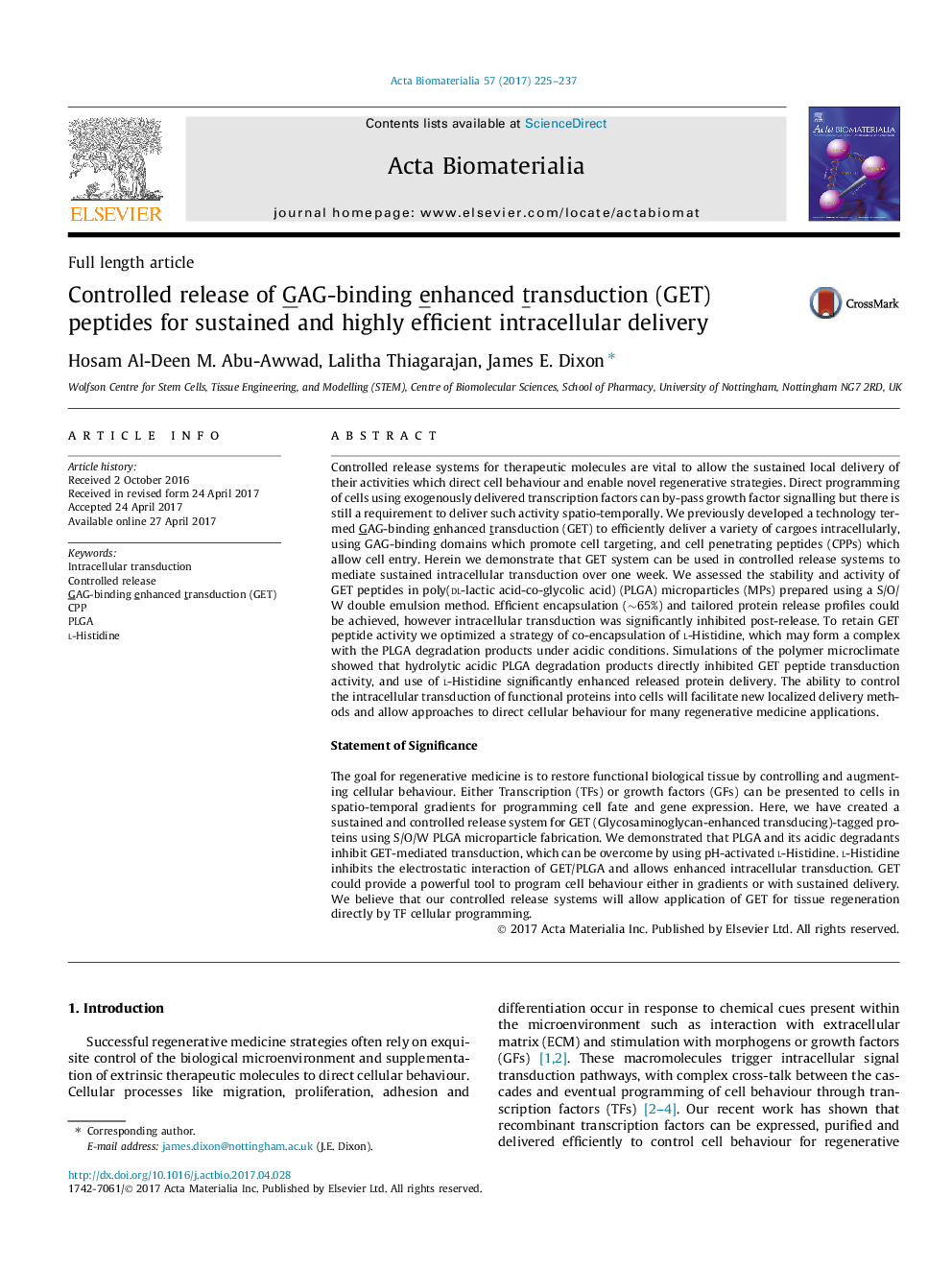| Article ID | Journal | Published Year | Pages | File Type |
|---|---|---|---|---|
| 6449123 | Acta Biomaterialia | 2017 | 13 Pages |
Controlled release systems for therapeutic molecules are vital to allow the sustained local delivery of their activities which direct cell behaviour and enable novel regenerative strategies. Direct programming of cells using exogenously delivered transcription factors can by-pass growth factor signalling but there is still a requirement to deliver such activity spatio-temporally. We previously developed a technology termed GAG-binding enhanced transduction (GET) to efficiently deliver a variety of cargoes intracellularly, using GAG-binding domains which promote cell targeting, and cell penetrating peptides (CPPs) which allow cell entry. Herein we demonstrate that GET system can be used in controlled release systems to mediate sustained intracellular transduction over one week. We assessed the stability and activity of GET peptides in poly(dl-lactic acid-co-glycolic acid) (PLGA) microparticles (MPs) prepared using a S/O/W double emulsion method. Efficient encapsulation (â¼65%) and tailored protein release profiles could be achieved, however intracellular transduction was significantly inhibited post-release. To retain GET peptide activity we optimized a strategy of co-encapsulation of l-Histidine, which may form a complex with the PLGA degradation products under acidic conditions. Simulations of the polymer microclimate showed that hydrolytic acidic PLGA degradation products directly inhibited GET peptide transduction activity, and use of l-Histidine significantly enhanced released protein delivery. The ability to control the intracellular transduction of functional proteins into cells will facilitate new localized delivery methods and allow approaches to direct cellular behaviour for many regenerative medicine applications.Statement of SignificanceThe goal for regenerative medicine is to restore functional biological tissue by controlling and augmenting cellular behaviour. Either Transcription (TFs) or growth factors (GFs) can be presented to cells in spatio-temporal gradients for programming cell fate and gene expression. Here, we have created a sustained and controlled release system for GET (Glycosaminoglycan-enhanced transducing)-tagged proteins using S/O/W PLGA microparticle fabrication. We demonstrated that PLGA and its acidic degradants inhibit GET-mediated transduction, which can be overcome by using pH-activated l-Histidine. l-Histidine inhibits the electrostatic interaction of GET/PLGA and allows enhanced intracellular transduction. GET could provide a powerful tool to program cell behaviour either in gradients or with sustained delivery. We believe that our controlled release systems will allow application of GET for tissue regeneration directly by TF cellular programming.
Graphical abstractDownload high-res image (159KB)Download full-size image
